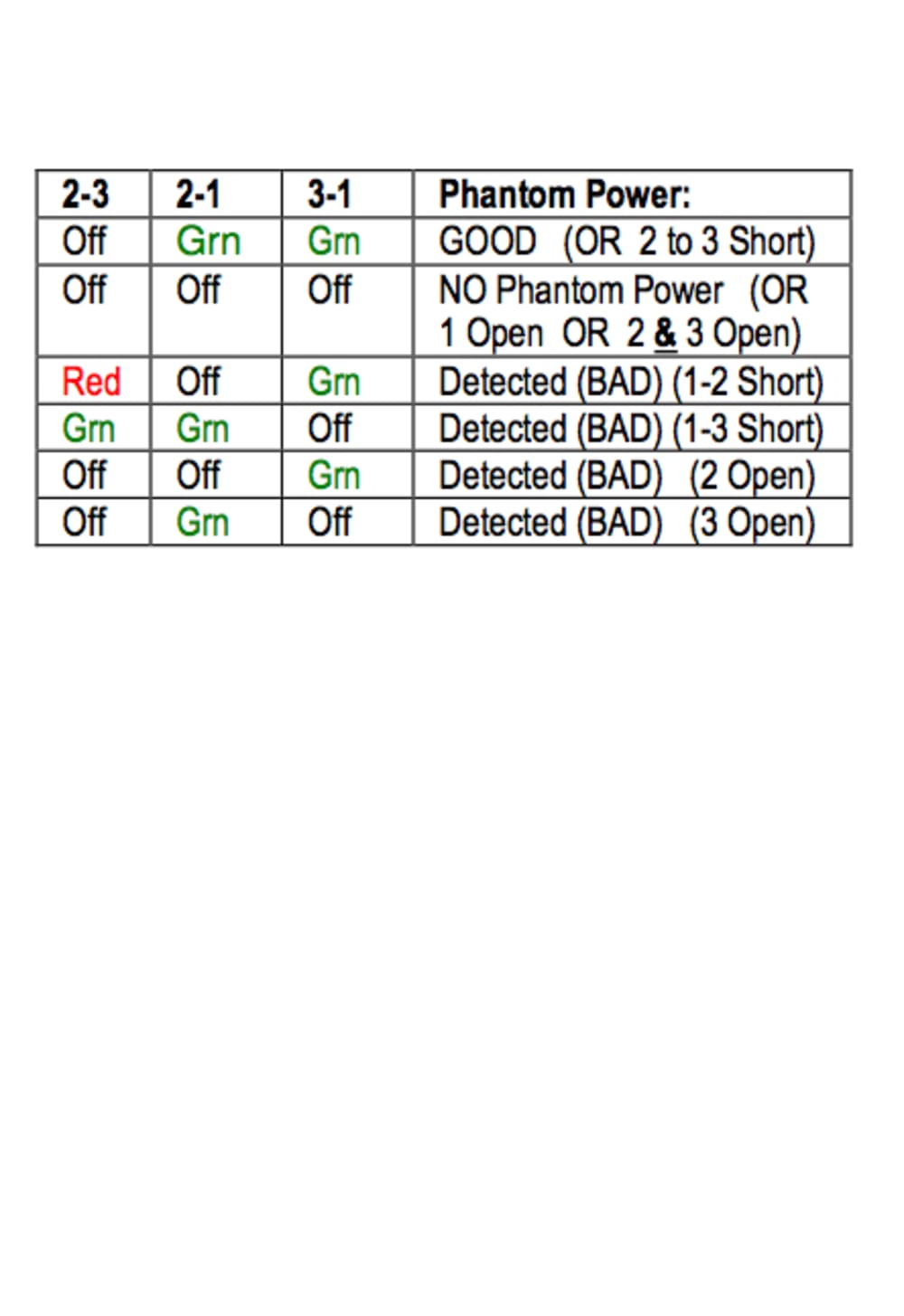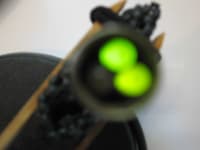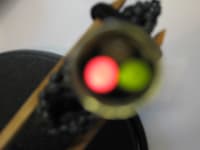Phantom Power, nominally +12 to +48 Volts DC,
is used to power Condenser Microphones.
The "Phantom" aspect refers to the presence of the voltage
on both signal pins (2 & 3, with pin 1 the ground reference) of the balanced line pair of the typical 3 pin XLR-style microphone connector.
Dynamic microphones can tolerate the phantom power, if applied correctly, since the voltage is the same on both pins used by the microphone coil.
However, certain cable faults (Pins 1-2 or Pins 1-3 shorted), could damage a dynamic microphone, with phantom power applied.
The problem can occur when a mix of Condenser and Dynamic microphones are in use; the typical modern microphone mixer applies (or does not apply) phantom power to ALL microphone inputs, via a SINGLE selector switch.
A simple tester is desired to detect/test phantom power
for each microphone connector, prior to connecting the microphone to a cable which may have Phantom Power present.
There are a couple of testers commercially available,
but cost is in the $40+ to $50+ range (includes "test tone" features).
A simple, passive, pocketable tester (no test tones) can be built into a Male XLR connector, using 3 Tri-Color 2-terminal T1-sized LEDs; shrink tubing around LEDs will be used to minimize "Optical Crosstalk" among the LEDs.
The LEDs completely enclosed within a rugged metal Male XLR connector, with the test matrix chart wrapped around the microphone connector (an attached "cheat sheet").
Target selling price: $25.
--------------------------
Companion "Loopack" installed cable test plug:
A test plug which can be used with readily available Pro Audio Cable Testers (e.g., Behringer CT-100) will also be developed, to enable installed microphone cable end-to-end testing.
Features and design implementation:
1. Rugged metal XLR Female connector.
2. Pins 2 and 3 (signal + and -) shorted,
and also to a short "flying lead"
insulated female bullet pin connector.
3. Pin 1 (Gnd/Shield) to a short "flying lead"
male bullet pin connector.
4. Wiring/instructions wrapped around the
microphone connector (an attached "cheat sheet").
5. Usage: After verifying that there are no cable shorts,
via the Pro Audio Cable Tester, use the Loopback Plug
to verify pin 2 and 3 (signal pair) continuity,
then check pin 1 (Gnd/shield) continuity,
and finally, whether there is (optional)
shell gnd/shield connectivity.
Target selling price: $20.
Like this entry?
-
About the Entrant
- Name:David Mikowychok
- Type of entry:individual
- Hardware used for this entry:Asus Eee PC 901 NetbookSoftware used for this entry:Microsoft Word
- Patent status:none








